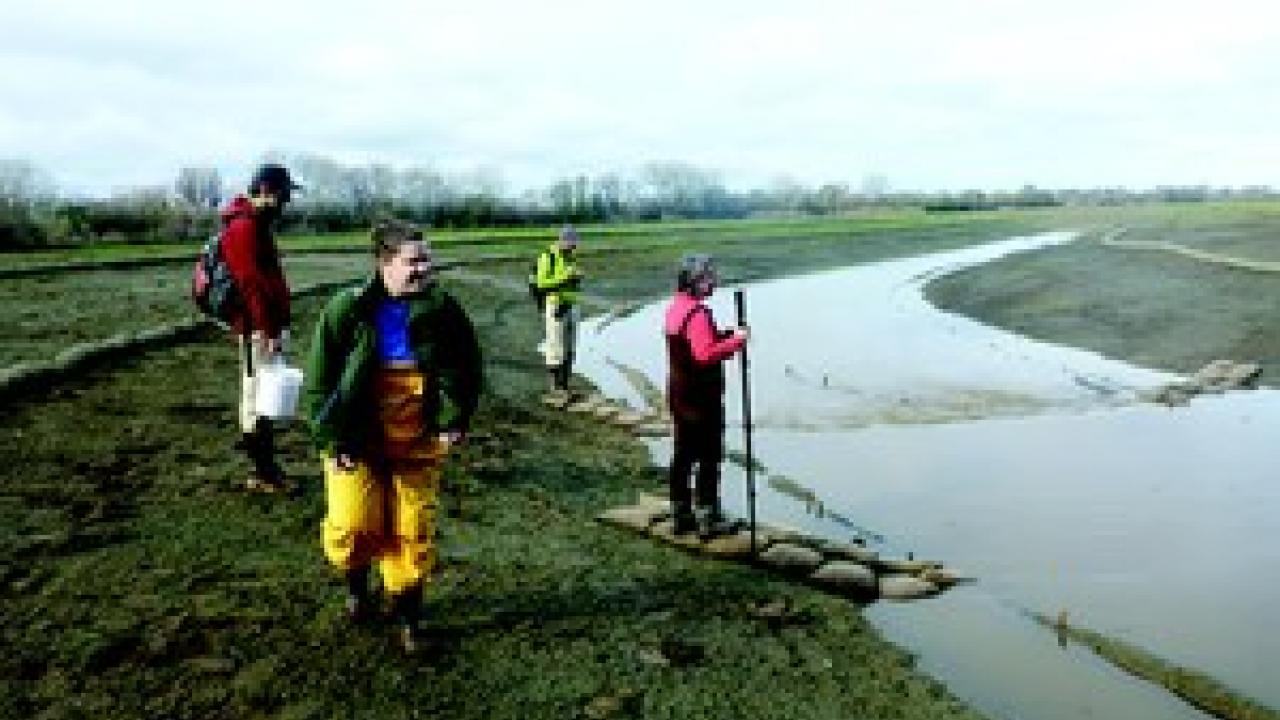
Groundwater: Bank On It
Planning, research, and fresh ideas will help shape water policy
One of the most positive outcomes of the four-year drought is how it focused attention on the importance of groundwater and the need for better management of this resource in some areas of the state.
With the passage of the Sustainable Groundwater Management Act in late 2014, a framework for managing this precious resource is taking shape. It calls for the formation of local agencies in priority areas to develop plans to manage groundwater and to be held accountable for achieving objectives. Those plans will take at least another five years to implement and decades to have a long-term impact.
Meanwhile, University of California researchers are studying many facets of groundwater. One project along the Cosumnes River in the Central Valley showed that making more room for floodwaters can improve groundwater supplies. “Putting levees back away from rivers rather than just keeping aging ones intact will help replenish groundwater,” said UC Davis hydrogeology professor Graham Fogg.
Fogg is one of the leaders of the UC Water Security and Sustainability Research Initiative, which involves scientists from the Berkeley, Davis, Merced, Santa Cruz, and San Diego campuses. Learn more about this partnership at ucwater.org.
UC Davis agricultural and resource economics professor Katrina Jessoe believes more needs to be done to introduce market-based principles to manage California’s water resources, especially groundwater banking in wet years and borrowing in dry years.
“It’s not a magic bullet solution to get us out of the drought or to remedy all our groundwater management problems,” she said. “But it’s an important step worth exploring.”
Pricing is another economics tool that Jessoe believes is necessary. “You have to price groundwater so it reflects the true costs of extraction,” she said. “If you take more groundwater, what happens to groundwater quality? You want cost to reflect that.”
Many groundwater quality problems are in small, rural systems that lack resources to address drinking water issues. UC Davis human ecology professor Jonathan London and postdoctoral fellow Carolina Balazs are studying the progress of state efforts to integrate some of these disadvantaged communities into regional water management planning.
Ultimately, sustainable groundwater management is an issue that goes well beyond California. “This is about how we grow 40 percent of our agricultural production in the world,” said groundwater specialist Thomas Harter. “That’s how much comes out of irrigated landscapes globally from places that look very much like California and, more importantly, that feed most of the people in this world. Figuring this out in California is critical.”